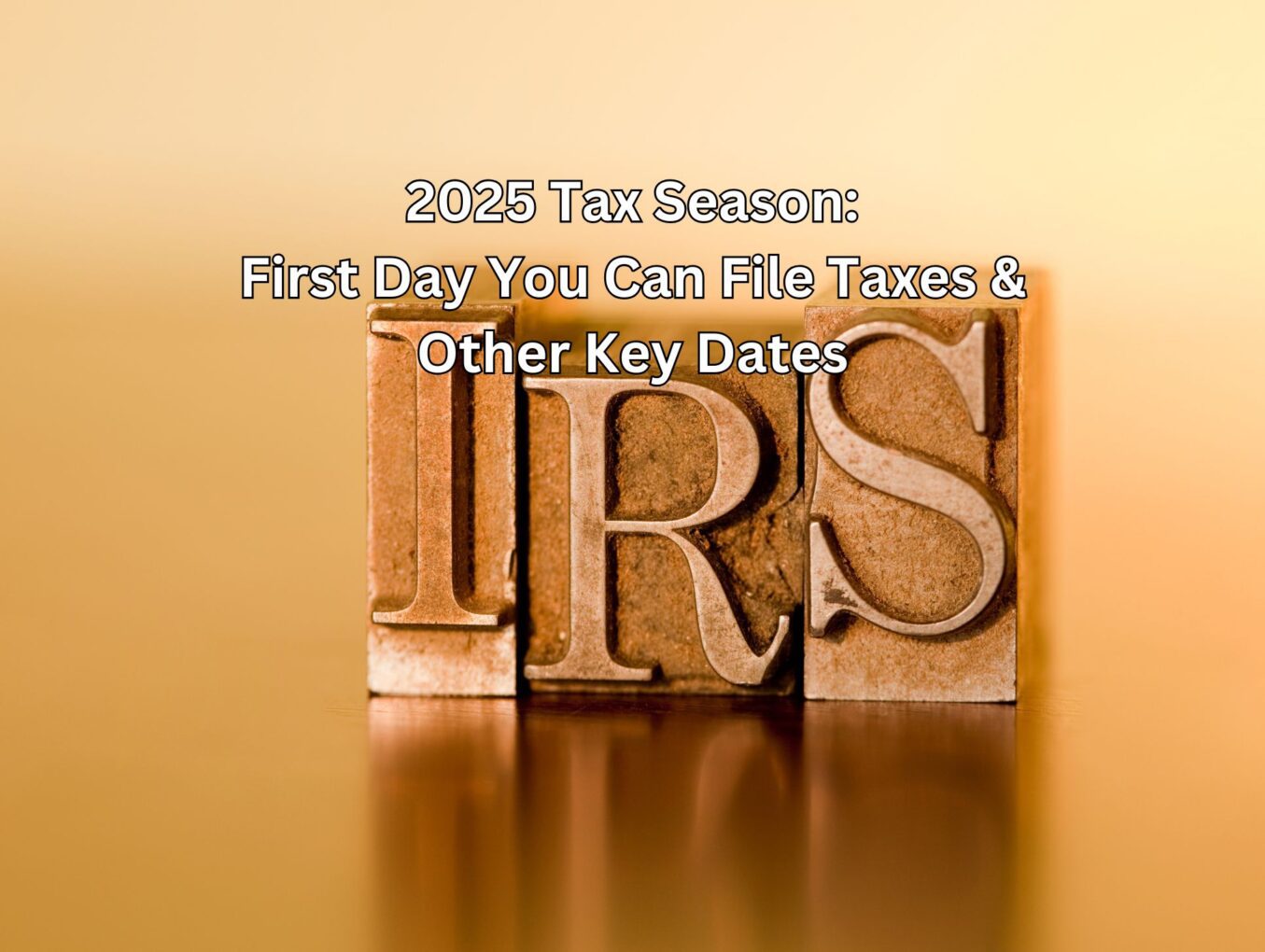The 2025 tax season begins the last week of January, and we’ve put together a simple FAQ to answer the most asked questions for filing 2024 returns.
We’ll go over everything from how early you can file and when taxes are due to the deadline to request an extension, when to expect your refund, and how soon you can apply for tax debt relief.
How Early Can You File Taxes in 2025?
The first day the IRS will begin accepting 2024 tax returns is January 27, 2025.
With the IRS expecting at least 140 million individual tax returns by April 15, the agency recommends taxpayers submit returns as early as possible.
View the IRS “Get Ready” page at https://irs.gov/individuals/get-ready-to-file-your-taxes for tips to make tax filing easier, what’s new for this year, and other online tools and resources for you to get started now.
When are 2024 Taxes Due?
The deadline to file and pay taxes for the 2024 tax year without incurring late penalties and interest charges is April 15, 2025.
You have until 11:59 PM on April 15 to file your return on time. Filing at 12:01 AM on April 16 could technically identify your return as late and you may be subject to fees and penalties.
Taxpayers in 25 states will be able to file for free with IRS Direct File in 2025. To see if you’re eligible, go to https://directfile.irs.gov.
Other ways to file online for free include:
- IRS Free File (https://irs.gov/filing/irs-free-file-do-your-taxes-for-free)
- VITA Volunteer Income Tax Assistance and TCE Tax Counseling for the Elderly programs (https://irs.gov/individuals/free-tax-return-preparation-for-qualifying-taxpayers)
- MilTax program for military service members and veterans (https://militaryonesource.mil/financial-legal/taxes/miltax-military-tax-services/).
What’s the Last Day to Request an Extension for 2024 Taxes?
You can request an extension no later than April 15, 2025.
You cannot request an extension after April 15 unless you live in a natural disaster area, you are seriously ill or a family member is seriously ill/passed away, you’re unable to access financial records, or there’s an IRS system issue.
For a current list of IRS disaster areas with automatic tax filing and payment extensions, visit https://irs.gov/newsroom/tax-relief-in-disaster-situations.
Taxpayers can ask the IRS for an extension by electronically submitting or mailing Form 4868 (Application for Automatic Extension of Time to File U.S. Individual Income Tax Return).
The IRS usually grants an additional six months to file returns by October 15, 2025. However, extensions do not allow taxpayers extra time to pay taxes, only to file returns.
If you owe taxes on April 15 and are approved for an extension to file, you still need to pay your taxes on or before April 15 to avoid penalties, fees, and interest charges.
What’s the 2025 Deadline to Make 2024 Tax Year Retirement Contributions?
The deadline to contribute to traditional and Roth IRAs for the 2024 tax year is the tax filing deadline April 15, 2025.
However, if you have a SEP IRA and file for an extension, you have the additional six months until October 15 to contribute to your freelance/self-employed pension plan.
Contributing to your retirement accounts before your traditional, Roth, or SEP IRA deadline can reduce your taxable income for the 2024 tax year.
When Can You Expect Your Tax Refund in 2025?
Factors affecting the time it takes to get a tax refund include whether you file online and use direct deposit, your return has errors, and/or your refund will be used to offset back taxes.
Filing electronically and choosing direct deposit is usually the fastest way to get your refund. For electronic returns (e-file), the IRS says most taxpayers will receive refunds in less than a month (usually 21 days).
Tax refunds for paper returns take a bit longer to process. The IRS estimates four or more weeks in this case.
How Soon After You File 2024 Taxes Can You Apply for Tax Relief If You Can’t Pay Tax Bill?
You can apply for tax relief as soon as you file your 2024 taxes. If you know you’re going to owe the IRS for 2024 and can’t pay, the sooner you can file your return and apply for a payment plan the better.
Keep in mind that if you also haven’t filed previous years’ returns, you will most likely need to do so before you can request help with paying 2024 taxes.
The IRS offers the following tax relief payment plans in 2025:
Short-term payment plan
180 days (six months) to pay taxes of less than $10,000 in monthly installments.
Long-term installment agreement
Up to 72 months (6 years) to pay taxes of more than $10,000 in monthly installments.
Offer in Compromise (OIC)
Five months to pay reduced taxes for a lump sum offer or 24 months to pay reduced taxes for a periodic payment offer.
Eligibility criteria for approval of an OIC includes proving financial difficulty with paying the full amount. The IRS will review your monthly income and expenses as well as the value of your assets to determine your ability to pay and the amount your taxes will be reduced.
Hardship Waivers/Uncollectable Status
Qualifying circumstances for hardship/uncollectable situations include serious illness or injury, natural disasters, unexpected job loss, or sudden income reduction.
You must provide documentation like medical records, unemployment forms, or proof of income loss to support such claims. The IRS will not consider hardship claims without supporting documents.
Need help applying for tax relief? You can start online by answering 6 simple questions.
6 Simple Questions. Free Evaluation.

